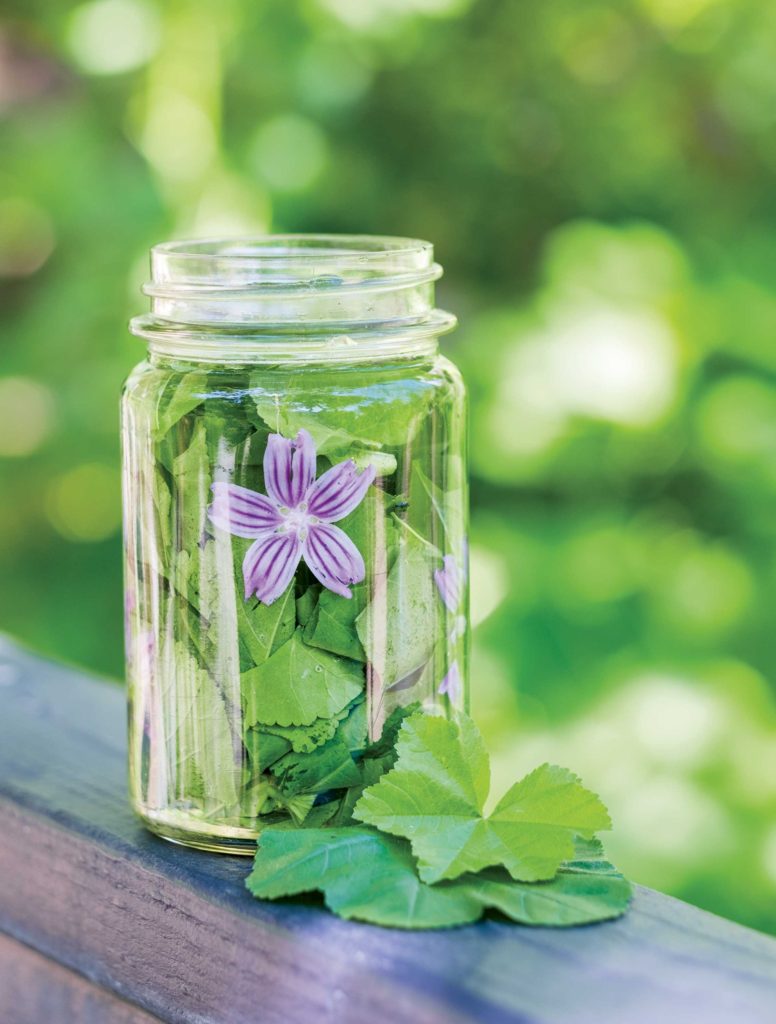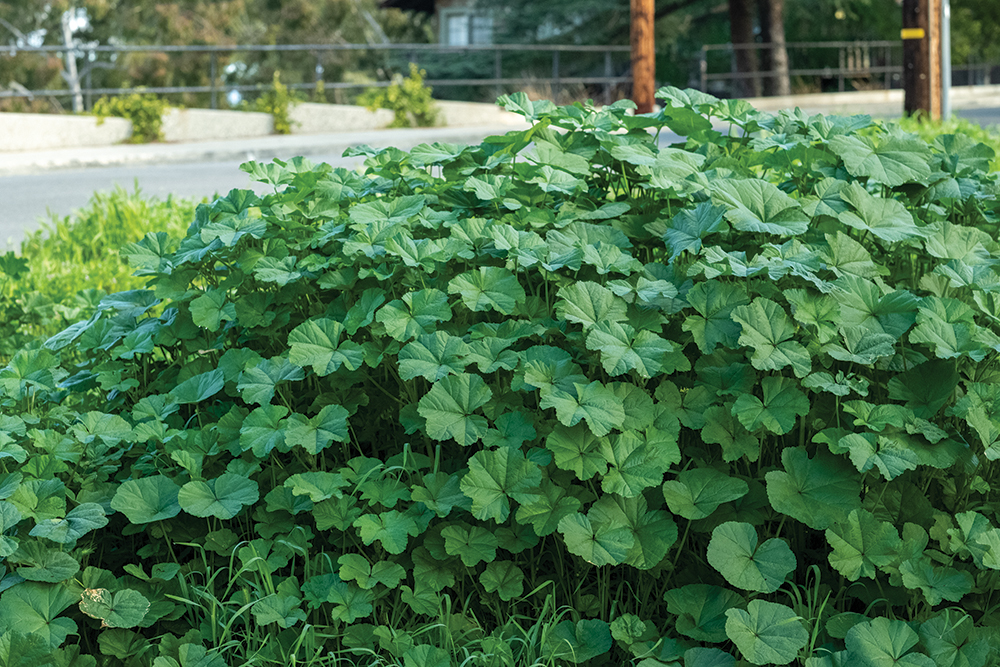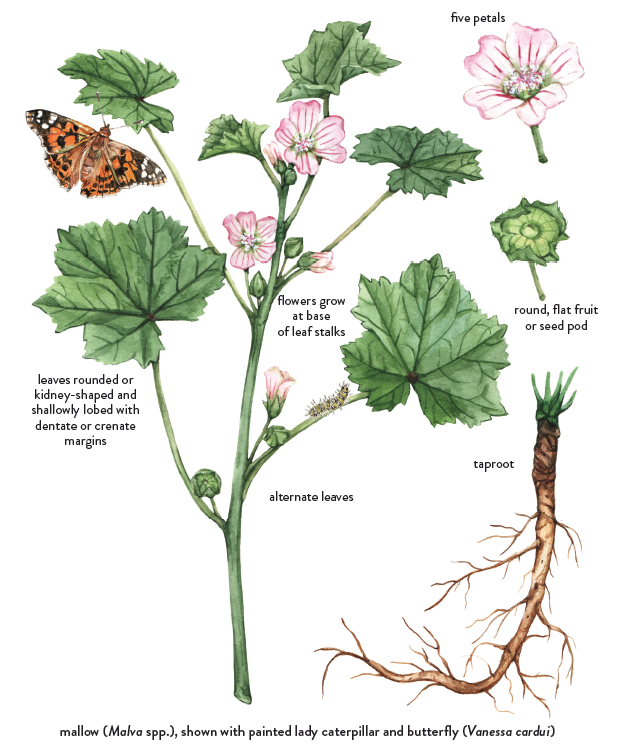
This is an excerpt from Wild Remedies: How to Forage Healing Foods and Craft Your Own Herbal Medicine by Rosalee de la Forêt and Emily Han (Hay House, 2020)
Mallow
(Malva neglecta, M. nicaeensis, M. parviflora, M. pusilla, M. sylvestris, and other species)
Highly revered in times past, mallow is now frequently disdained as an invasive weed—an uninvited guest in gardens and disturbed soils. It’s rare to encounter a whoop of gratitude when someone has an abundant amount of mallow; more commonly, people seek out ways to eradicate it. If you do not already love mallow, once you begin to rely on its many special gifts, you’ll forever consider it a generous friend that offers its medicine freely.
Many species of mallow have been used as both food and medicine for thousands of years. Experts believe that Malva neglecta originated in North Africa and Eurasia; M. sylvestris is common in Europe. Althaea officinalis, a close cousin to mallow commonly known as marshmallow, can be easily grown in the garden.

Medicinal Properties and Energetics
The core gifts of mallow lie in its slippery, slimy, and gooey qualities. We call these plants mucilaginous or demulcent. The gel-like nature of mallow is soothing and cooling, offering relief to hot and dry tissues. Mallow reminds us that plants work in mysterious ways. When we consume mucilage, it not only affects the tissues it comes into contact with but also promotes moisture systemically, reaching organs like the lungs and kidneys.
For more information on mallow’s medicinal and edible gifts plus how to identify, harvest, and use it, see Wild Remedies: How to Forage Healing Foods and Craft Your Own Herbal Medicine.

Mallow Cold Infusion
There’s no better way to extract mallow’s soothing qualities than by making a cold infusion. If you use the roots, you will get a viscous drink that can relieve hot, inflamed conditions like dry sore throats, canker sores, urinary tract infections, and respiratory systems affected by dry winds or the airborne soot of wildfires. If you use the leaves, the result will be less goopy than a root-based tea—more like a simple, refreshing herbal water. (We often add mint and lemon.)
Yield: 2 cups
1/2 cup finely chopped dried mallow root (about 1 ounce), or 2/3 cup packed fresh mallow leaves, torn or chopped
Up to 2 cups cool water
1. Place the mallow in a pint jar. Pour in enough water to fi ll the jar and submerge the herbs completely. (You might not use the entire 2 cups.)
2. Stir to moisten the herbs. Cover the jar and let it sit for a few hours or overnight in the refrigerator. The longer it infuses, the more viscous it will be.
3. Strain through a fine-mesh strainer. If you used roots, press down on them with the back of a spoon to extract as much of the gooey mucilage as possible.
4. Drink within 24 hours, sipping throughout the day as needed.

